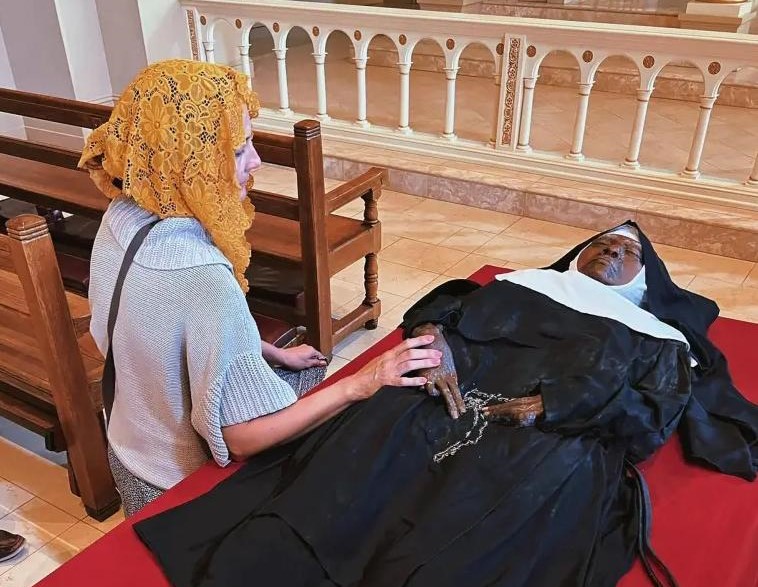Hundreds of out-of-towners (and locals) flocked to the Benedictines of Mary, Queen of Apostles Monastery, in rural Missouri to view the “intact” remains of Sister Wilhelmina Lancaster who was exhumed last week.
Sister Lancaster died at age 95 in 2019, and when the body was exhumed “roughly four years later,” it showed no signs of decay. The body was exhumed so it can be moved to its final resting place at the monastery chapel.
“We think she is the first African American woman to be found incorrupt,” the current abbess of the community, Mother Cecilia said, The Telegraph reports.
We reported previously, via CNN, that the body had not been embalmed and was in a wooden coffin. To a lot of people, the barely decomposed body of this Black nun is nothing short of a miracle. Visitors who wanted a glimpse of the so-called “Miracle in Missouri” were allowed to touch the body, according to U.S. News and World Report.
While “Incorruptibility” is cause for sainthood, this process will likely not begin right away for Lancaster as her body was dug up a year too soon to qualify. The Diocese of Kansas City-St. Joseph acknowledged as much in a statement.
“The condition of the remains of Sister Wilhelmina Lancaster has understandably generated widespread interest and raised important questions,” the diocese said. “At the same time, it is important to protect the integrity of the mortal remains of Sister Wilhelmina to allow for a thorough investigation.”
“Incorruptibility has been verified in the past, but it is very rare. There is a well-established process to pursue the cause for sainthood, but that has not been initiated in this case yet,” the diocese added.
According to the Benedictines of Mary, Queen of Apostles, Lancaster has not yet reached the five-year requirement for sainthood, according to U.S. News and World Report.
Meanwhile, Rebecca George, an anthropology instructor at Western Carolina University in North Carolina, said the “mummification” of un-embalmed bodies is not uncommon.
“Typically, when we bury people, we don’t exhume them. We don’t get to look at them a couple years out,” George said. “With 100 years, there might be nothing left. But when you’ve got just a few years out, this is not unexpected.”
WATCH:

